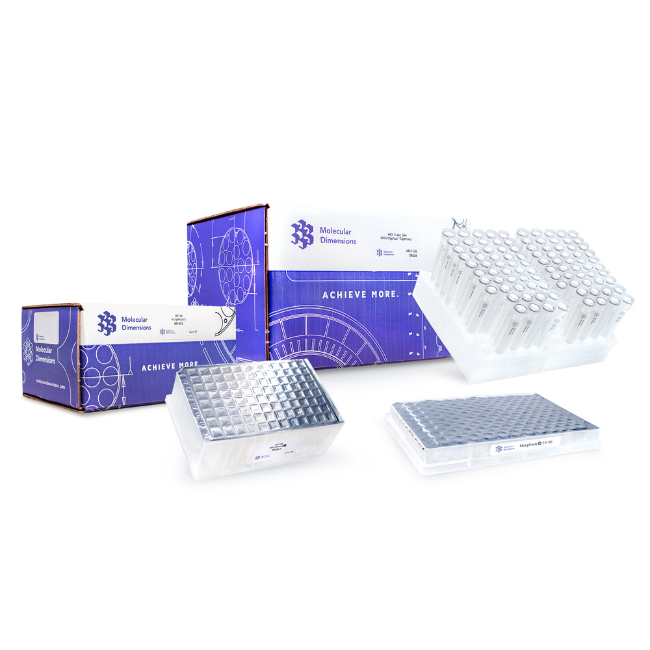Kryos Screen
The Kryos Screen is a 96-condition cryoprotected crystallisation screen, using 48 top selling chemical conditions, supplied with 2 different cryoprotectants per condition.
Learn More About the Kryos Screen BelowProduct Information
Two versions are available
M-MD1-133 is presented as 96 x 10mL conditions.
M-MD1-134 is presented as 96 x 1mL conditions.
Features of The Kryos Screen:
- 48 highly varied conditions
- 2 cryoprotectant options per condition
- Supports crystal cryoprotection
- Conditions 1-1 to 1-48 (Part A) cryoprotected with MPD/Glycerol
- Conditions 2-1 to 2-48 (Part B) cryoprotected with PEG 400/Glycerol
Cryoprotectants are vital to protect crystals against low temperatures, minimizing radiation damage observed during X-ray data collection. The Kryos Screen has been developed using the manufacturers top-selling crystallization conditions with the addition of cryoprotectants. Cryoprotectants for this screen were chosen by the manufacturers in-house crystallization trials and customer feedback to support real-world data collection.
Choice of Crystallization Conditions and Cryoprotectants:
The manufacturer has filtered through their extensive list of purchased single conditions (MDSRs) from all of their commercial crystallization screens to arrive at the top 48 single conditions which are not cryoprotected. This resulted in the removal of single conditions from their Morpheus range of screens and other conditions which are already cryoprotected. They also removed conditions that were very similar to each other in order to maximize the chemical space explored. Each of the 48 chosen conditions were tested with 25% MPD, 25% PEG 400, 25% Glycerol, and 25% Ethylene glycol respectively to determine if the addition of the cryoprotectant would cause phase separation or
precipitation of the chemical solution.
Lysozyme crystals were prepared in manual hanging drop 24-well plates with each cryoprotected condition and a duplicate of each condition without any cryoprotectant added. Based on the crystallization success rate observed with the added cryoprotectants and any phase separation/precipitation of the chemicals, the two optimum cryoprotectants per condition were chosen to be included in the Kryos Screen.

